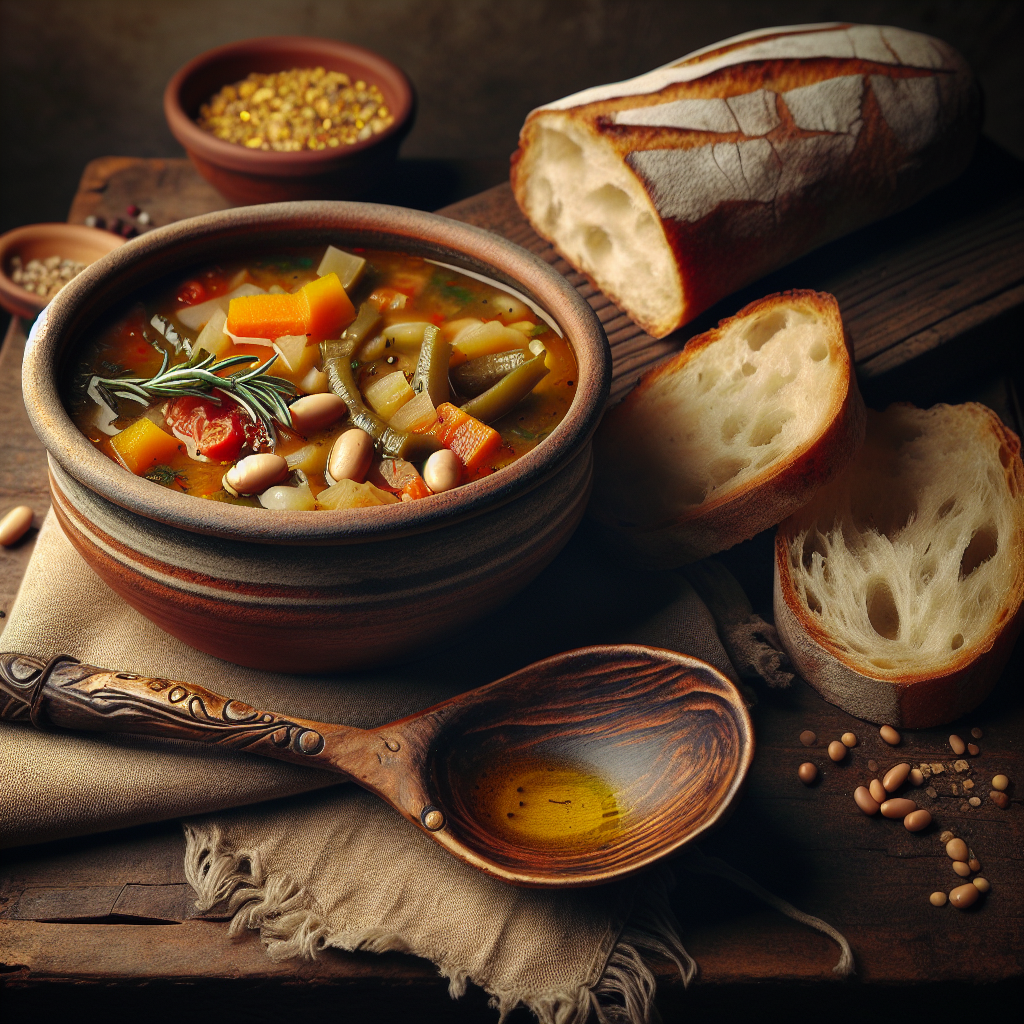Tuck into a bowl of Ribollita, a rustic and hearty soup that warms you from the inside out. This Tuscan treasure tells a story of humble beginnings and culinary ingenuity. With each spoonful, you experience a blend of tender vegetables, creamy beans, and soft, thickened bread, all steeped in a rich tomato broth that’s been lovingly simmered to perfection. Ribollita is not just food—it’s a cultural emblem, a symbol of making the most out of the least, and a reminder of the comforting power of a good meal shared with family and friends.


Recipe:
- 2 tablespoons olive oil
- 1 medium yellow onion, diced
- 2 carrots, peeled and diced
- 2 celery stalks, diced
- 2 garlic cloves, minced
- 1 teaspoon dried thyme
- 1/2 teaspoon red pepper flakes (optional)
- 1 large can (28 oz) diced tomatoes
- 1 can (15 oz) cannellini beans, drained and rinsed
- 4 cups vegetable broth
- 1 small bunch kale, chopped
- 1 medium zucchini, diced (optional)
- 1 stale baguette, torn into pieces
- Salt and pepper to taste
- Grated Parmesan cheese (optional)
- Extra virgin olive oil for drizzling


Fun Facts about Ribollita:
Ribollita’s roots go back to the Middle Ages, hailing from the region of Tuscany, Italy. It’s a dish born out of necessity and frugality, with no waste. Serfs would take their lords’ leftover food, adding stale bread and available vegetables to make a new meal. The name “ribollita,” means “reboiled,” showing how the dish is often reheated over several days, with flavors getting better each time.
As a symbol of cucina povera, or “poor kitchen,” Ribollita shows how peasants made simple, inexpensive ingredients into a meal rich in taste and history. It’s a perfect example of delicious food that is affordable. This soup is typically enjoyed during the colder months, offering warmth and sustenance, and is often on the menu in Italian homes and rustic trattorias.
Modern chefs have embraced Ribollita, making gluten-free and vegan versions for current dietary preferences. The essence of Ribollita stays the same, though. It’s a dish best enjoyed when flavors have melded, often even better after a day or two. It’s usually reheated, with each iteration tastier than the last.
The cultural importance of Ribollita is clear. It showcases the ingenuity of Tuscan cuisine and reminds us of a time when using leftovers was practical and necessary. Today, it is a beloved comfort food, a staple for those wanting solace in a warm, filling, and authentically Italian meal. When you sit down to Ribollita, you partake in a tradition that has been bringing people together for centuries.

